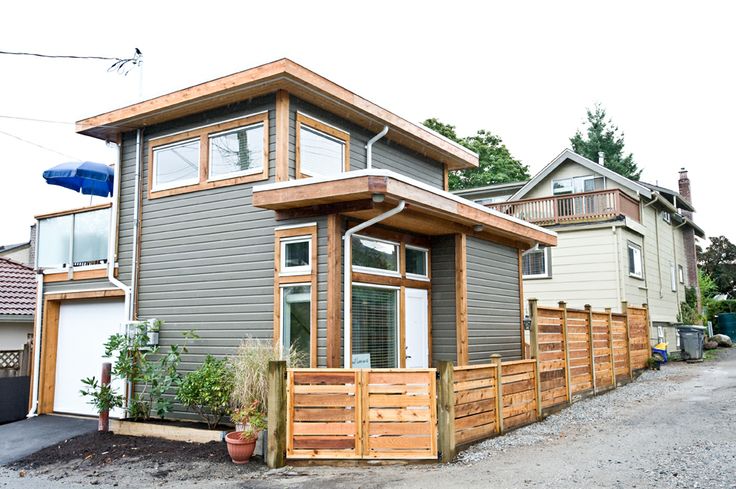What are the tax implications of building a laneway house?

A laneway house is a small detached residential infill house that typically fronts on the lane of a larger principal house.
It’s important for property owners to understand their options before building a laneway house or buying a property with a laneway house. Here, you'll find information about the tax implications of laneway houses through these scenarios outlined by the Canada Revenue Agency (CRA).
1. You own a principal residence and you hire a builder to build a new laneway house. You then rent or lease the laneway home to a non-relative.
The CRA considers you to be the builder, and to have:
- sold, repurchased, or “self-supplied” the laneway house at its fair market value
- self-assessed and collected the GST on the sale
- paid the GST on the repurchase of the laneway house
You must account for the GST on a GST/HST return (self-assessing), even if you are not a GST/HST registrant. You may:
- be eligible to claim a GST rebate on the construction of the laneway house, which is considered an improvement to the property, and on the land that forms part of the laneway house. Read: Guide RC4033, General Application for GST/HST Rebates
- claim the rebate on Form GST189, General Application for rebate of GST/HST using reason Code 7. For information, read GST/HST Memorandum 19.3.6, Rebate on Non-Registrant's Sale of Real Property
- be eligible for a GST/HST New Residential Rental Property Rebate as a builder/landlord to recover some of the GST
2. You own a principal residence and hire a builder to build a new laneway house for a relative, former spouse, or common-law partner to live in as their principal residence.
The CRA does not consider that you have sold and repurchased the laneway house and collected the GST if:
- the laneway house is used primarily (more than 50 per cent) as a place of residence
- the laneway house is not used primarily for any other purpose after construction of the house is substantially completed
- the individual (builder) did not claim any input tax credits (ITCs) when building the laneway house
You can’t claim a non-registrant’s rebate for the GST paid on construction costs. You may:
- be eligible for a GST/HST New Housing Rebate for your principal residence
- claim the rebate on Form GST189, General Application for rebate of GST/HST, using reason Code 7.
3. You buy a property that includes a new principal residence and laneway house and you rent or lease the laneway home another individual as a place of residence.
The CRA does not consider you to be the builder of the laneway house or to have sold and repurchased the laneway house, or to have collected tax when you rent to a non-relative.
- You may be eligible for a GST/HST New Housing Rebate on the construction of the laneway house if your relative uses it as a principal residence
- If you rent or lease the laneway house to a non-relative, you may be eligible for a GST/HST New Housing Rebate for your principal house if it is your primary place of residence
- You can claim the rebate on Form GST189, General Application for rebate of GST/HST, using reason Code 7. Read GST/HST Memorandum 19.3.6, Rebate on Non-Registrant's Sale of Real Property
- You may be eligible for a GST/HST New Residential Rental Property Rebate.
For more information, tell your clients to read the CRA’s The HST/HST Implications of the Construction of Secondary Housing Unites (Laneway Housing).
Did you know?
A laneway home increases the value of a client’s home. Building a laneway home:
- could affect the client’s eligibility to claim the Home Owner Grant because of the increase in property value beyond the price thresholds
- may also result in increased property taxes